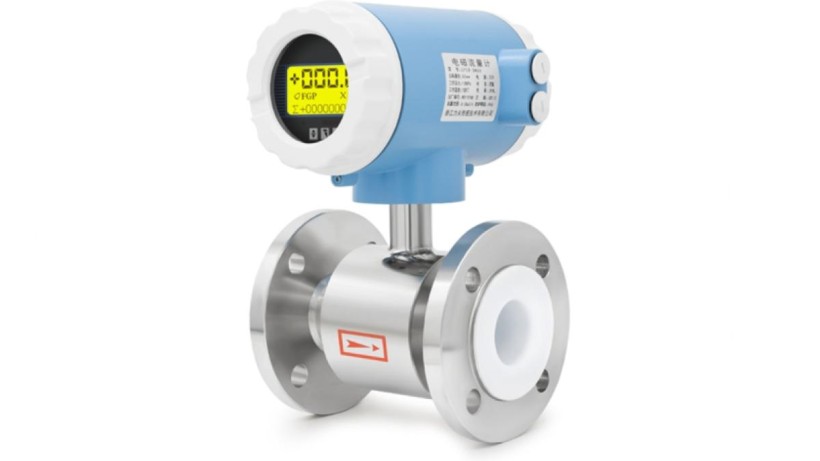In modern industrial environments, automation plays a crucial role in enhancing productivity, efficiency, and safety. One of the essential components that support this evolution is the automatic level controller. Designed to monitor and regulate the level of liquids, slurries, or even bulk materials in tanks, reservoirs, and pipelines, automatic level controllers are critical to a wide variety of sectors, from water treatment and food processing to petrochemicals and pharmaceuticals.
In this blog post, we’ll explore how automatic level controllers work, the different types available, and—most importantly—their many advantages in industrial applications.
What Is an Automatic Level Controller?
An automatic level controller is a device that senses the level of a fluid or material and automatically controls the inflow or outflow to maintain it within a desired range. This is achieved through the use of sensors, control systems, and actuators that work together to ensure consistent levels without the need for constant human intervention.
These devices are commonly integrated with pumps, valves, alarms, or PLC systems to maintain optimal process conditions.
How Do Automatic Level Controllers Work?
Although there are different types of level controllers (mechanical, electrical, ultrasonic, capacitive, radar, etc.), the basic principle remains the same:
-
A sensor detects the current level of the substance in the container.
-
A control unit compares this measured level to predefined setpoints.
-
If the level is too high or too low, the controller triggers an actuator (e.g., a pump or valve) to adjust the flow accordingly.
This automatic regulation eliminates manual monitoring, reduces errors, and ensures a stable process environment.
Main Types of Level Controllers
There are several types of automatic level controllers, each suited to specific environments and materials:
-
Float-based Controllers: Use mechanical floats that rise or fall with the liquid level.
-
Capacitive Controllers: Measure changes in capacitance as the level varies.
-
Ultrasonic Controllers: Use sound waves to detect levels without making contact.
-
Radar Controllers: Use microwave signals for high-precision, non-contact measurement.
-
Conductive Controllers: Rely on the conductivity of the liquid to detect levels.
-
Pressure-based Controllers: Detect hydrostatic pressure exerted by the liquid column.
Each type offers unique benefits depending on the application—whether it involves clean water, corrosive chemicals, foaming liquids, or powders.
Key Advantages of Automatic Level Controllers
1. Improved Process Efficiency
With automatic control, systems can respond instantly to level changes, keeping operations running smoothly and continuously. This real-time adjustment leads to more consistent product quality and less downtime.
For example, in a bottling plant, maintaining the correct fluid level in supply tanks is essential to ensure that every bottle receives the right amount of liquid.
2. Reduced Human Error
Manual monitoring of tank or silo levels is time-consuming and prone to mistakes. Automatic level controllers eliminate the need for constant supervision and minimize the risk of overflows, dry runs, or process interruptions caused by human error.
In industries where safety is a major concern—such as chemicals or oil & gas—this benefit is particularly valuable.
3. Energy and Resource Savings
By accurately regulating pumps and valves, level controllers help avoid unnecessary motor operations. This reduces energy consumption and operational costs. They can also prevent the wastage of water, chemicals, or raw materials by ensuring that tanks are neither overfilled nor emptied inefficiently.
Over time, these savings can significantly boost an operation’s profitability and sustainability.
4. Increased Equipment Lifespan
Automatic control systems reduce the wear and tear on equipment by avoiding abrupt starts or stops of pumps and reducing cavitation and pressure surges. This not only improves system reliability but also extends the service life of your machinery, reducing the need for frequent repairs or replacements.
5. Greater Safety
Uncontrolled fluid levels can lead to dangerous situations, including spills, chemical exposure, or equipment failure. Automatic level controllers ensure that levels stay within safe limits, reducing the likelihood of accidents and maintaining compliance with industry regulations.
Many systems also include alarm functions to alert operators in case of abnormal levels, providing an extra layer of protection.
6. Remote Monitoring and Integration
Modern level controllers can be connected to SCADA systems, PLCs, or IoT platforms. This allows operators to monitor and adjust levels remotely, receive alerts in real time, and even collect data for analysis and optimization.
This integration supports predictive maintenance, production planning, and quality control—all from a central dashboard.
7. Adaptability Across Industries
Automatic level controllers are used in a wide range of industrial processes, including:
-
Water and Wastewater Management: Regulating levels in treatment tanks, reservoirs, and pumping stations.
-
Chemical Industry: Handling aggressive liquids, acids, or solvents with precision.
-
Food and Beverage: Maintaining hygiene and precision in ingredients and processing fluids.
-
Pharmaceuticals: Ensuring sterile and accurate dosing of fluids in highly regulated environments.
-
Agriculture: Managing irrigation and liquid fertilizers with minimal intervention.
-
HVAC and Cooling Systems: Monitoring coolant levels in closed systems.
The adaptability of these systems makes them essential across diverse sectors.
Factors to Consider When Selecting an Automatic Level Controller
To choose the right automatic level controller for your application, consider:
-
Type of Fluid: Is it conductive, corrosive, viscous, or foamy?
-
Temperature and Pressure: Extreme conditions require robust, industrial-grade devices.
-
Tank Design: Open or closed tanks, size, and geometry may affect sensor choice.
-
Required Accuracy: High-precision processes may need radar or capacitive solutions.
-
Installation Environment: Dust, humidity, or explosive atmospheres may limit certain options.
-
Integration Needs: Does it need to communicate with your existing control system?
Consulting a specialist can help ensure you select a controller that matches your specific process requirements.
Automatic level controllers offer a reliable, efficient, and cost-effective solution for monitoring and managing fluid levels in industrial environments. By automating this critical task, they reduce labor, improve process performance, enhance safety, and help conserve valuable resources.
As industries continue to evolve toward greater automation and digital control, the role of smart, responsive devices like automatic level controllers becomes increasingly vital.
At Lefoo, we provide a full range of automatic level control solutions tailored for industrial and commercial applications. Whether you need float switches, capacitive sensors, or advanced radar technology, our team is ready to help you select and integrate the perfect solution.



